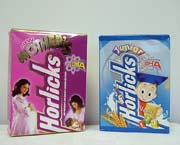
"And old standards, without flexibility to be modernized, don't necessarily serve us well in a new global reality," according to Connie Tipton, president and CEO of IDFA. "The problem is, new products or processing technologies often do not fit the traditional definitions of standard dairy products . . . Such rules clearly restrict our options and restrain our innovation as a global dairy power . . ."
Indeed, standards restrict options and innovation. Now granted, savvy marketers with supportive legal counsel manage to identify ways to overcome these barriers. For example, there are standards for "yogurt" (regular, whole milk), "lowfat yogurt" and "nonfat yogurt." The language of these three standards prevents yogurt from being a carrier of functional ingredients. A way to overcome this barrier is to label the product using a fanciful name and treat yogurt as an ingredient, rather than as the finished product. For example, the new product named "Dannon Light ‘n Fit® with Fiber" is described as "fiber blended with fruit and Light ‘n Fit nonfat yogurt."
This month's special feature on functional foods indicates that dairy has a very promising role in this movement of formulating foods that provide a health benefit beyond basic nutrition. And as you can see from the Dannon example, there are ways to overcome the barriers established by the standards.
Regarding the functional foods movement, there are some functional ingredients ideally suited for application in dairy foods. One such ingredient category is the omega-3s.
"There is a lot of talk about omega-3s in fortified foods, but most consumers and manufacturers don't realize that not all omega-3s are created equal. In fact, saying a food is a good source of omega-3s is just as vague as saying a food is a good source of vitamins," says Beth Parker, public relations mgr., Martek Biosciences, Columbia, Md.
Omega-3s are essential fatty acids. FDA has made available a qualified health claim suggesting a reduced risk of coronary heart disease with consuming conventional foods containing eicosapentaenoic acid (EPA) and docosahexaenoic acid (DHA) omega-3 fatty acids. Both of these omega-3s are found in concentrated sources in fatty fish. Alpha-linolenic acid (ALA), another omega-3, is found in plant-derived components such as flax seed, dark green leafy vegetables and certain vegetable oils. ALA can be converted in the human body to DHA and EPA. Consuming ALA is better than consuming no omega-3 at all, but the conversion process can be quite inefficient and unpredictable.
Thus, consuming DHA and EPA directly is best for the body. This can be quite challenging, as most consumers are not willing to increase their intake of fatty fish. Why fatty fish? Well, first off, fish obtain omega-3s by consuming algae. And, because omega-3s are fatty acids, they are concentrated in fish that are fatty. Take note, the two most common sources of purified DHA and EPA ingredients are fish oil and algae, with the latter considered a vegan source for labeling purposes.
"Because many people do not eat enough of the proper kinds of fish to supply significant levels of DHA and EPA, there is considerable interest in functional food products that are capable of delivering nutritionally meaningful levels of EPA and DHA," says Richard Weis, v.p. of business development, OmegaPure, Houston, Texas. "Dairy products are a good vehicle for delivering long chain omega-3s because they contain fat, which makes it easier to incorporate the EPA and DHA fatty acids into dairy applications. In addition, dairy products are refrigerated. This slows oxidation that can occur over time with any fat."
As Parker said, most consumers don't realize that the omega-3s differ in their "functionality." Parents and caregivers are starting to understand the difference as a result of select infant formulas now made to contain DHA. DHA is a major structural fatty acid in the gray matter of the brain, as well as in the retina of the eye. DHA is also a key component of the heart, especially in the conducting tissue.